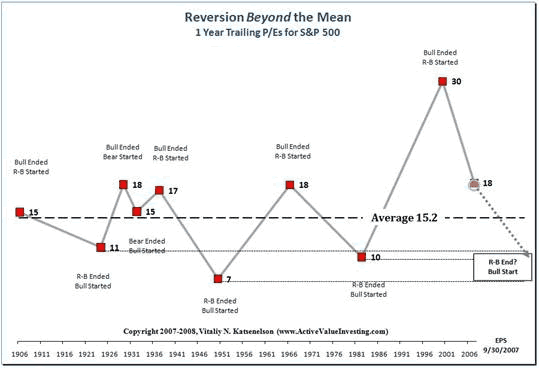Three Ways to Hedge Your Bets
Post on: 8 Июнь, 2015 No Comment

So You Want To Trade Options/Strategies
Four Ways to Hedge Your Bets
Elizabeth Harrow (eharrow@sir-inc.com)
As you may already be aware, hedging is a particularly popular use for options — and why not? Options offer a relatively low-cost, low-risk method of insuring against major losses on your stock investments. In this article, I’m going to explain four common ways you can use option contracts to hedge your bets in the market.
Protect individual stock investments
First up, we have the aptly named protective put, which also goes by the alias married put. As devoted readers of this column are already aware, buying (to open) a put option gives you the right, but not the obligation, to sell 100 shares of the underlying equity at the strike price of the contract. This bearish bet is described as a long put.
So, let’s imagine that you own 1,000 shares of Stock XYZ. It’s a relatively reliable stock that you’ve held in your portfolio for a couple of years, collecting a respectable gain of 155% in the process. Ideally, you’d like to hang onto your shares, since you’re collecting a healthy dividend and you think the company’s long-term prospects are solid.
However, there’s a recent fundamental development that has made you a little anxious. XYZ’s CEO of 25 years has retired, and you’re jittery that the shift to a new chief executive could have negative effects on the share price.
In this scenario, there’s no need to panic-sell the stock — nor do you need to sit around and watch your profits dwindle. Instead, you can soothe your jittery mind by purchasing a protective put. To execute the strategy, simply buy (to open) one put option for every 100 shares you’d like to insure (in this case, you would need 10 puts to protect all 1,000 shares).
There are no hard-and-fast guidelines, but try to align the strike price of your puts with your preferred exit price on the stock. If XYZ is sitting at $58 per share, and you don’t want to own the shares below $50, avail yourself of 50-strike puts. Meanwhile, select a time frame that corresponds with your expected period of weak (or uncertain) price action. In this example, you’ll probably have a good idea after three months or so whether you should bail out, or keep holding the stock.
If the security plummets, as you feared, your put options will go in the money. You can then exercise your option to sell the shares at the strike price, thereby locking in a comfortable exit price. Essentially, the purchase of the put options has put a very concrete floor on your downside risk.
But, even if the puts expire worthless, there’s an upside: you’re still holding a stock on which you’re bullish long-term. Plus, the protective puts have provided you with peace of mind, which — as any insurance commercial worth its salt will tell you — is virtually priceless.
Guard against sector-specific weakness
Thanks to the ever-growing popularity of exchange-traded funds (ETF), your hedging opportunities are almost endlessly diverse. There are now ETFs available on pretty much every sector of the economy, every region of the world — and soon, I imagine, companies whose names begin with the same letter. This is great news for traders, especially those of you who are feeling downright hedge-y.
Let’s dive into an example, shall we? If you own a variety of large-cap tech stocks, it would be a giant pain to purchase a protective put on each individual equity (plus, it would cost you a slew of brokerage fees). However, that doesn’t change the fact that you’re concerned about the possible ill effects of a slowdown in corporate IT spending.
If you expect this fundamental development to negatively impact some of your tech holdings, but you’d ideally like to keep the shares during the long run, simply locate an ETF that’s based on the sector in question. In this example, it would be the PowerShares QQQ Trust (QQQQ), which tracks such heavy hitters as Apple (AAPL), Microsoft (MSFT), and Intel (INTC). To hedge your large-cap tech investments, pick up one put option per 1,000 shares you’d like to protect.
The possible outcomes here are approximately the same as with a straightforward protective puts. But, keep in mind that ETFs won’t necessarily track the movements of your stocks directly, due to their unique compositions. For example, AAPL accounts for 13.1% of the QQQQ, while INTC is just 2.4%. So, you could potentially lose money on your Intel shares, while the QQQQ remains stubbornly above the strike price of your puts, due to a simultaneous rally in AAPL shares.
Happily, though, a great number of sectors have more than one ETF dedicated to their every movement, so you should be able to shop around. Do your research before you buy put protection, because it definitely pays to keep an eye on the weighting assigned to each asset in the ETF.
Finally, in this scenario, it’s worth noting that you will most likely not be exercising your option, as you would with a protective put — unless you happen to have a couple hundred shares of the appropriate ETF handy to sell. Instead, if your option goes in the money, you can simply sell to close prior to expiration in order to lock in a gain on the position.
Shield your portfolio from broad-market mayhem
The natural extension of this idea is to purchase protective puts on the entire equities market. This is a nifty trick during bear markets, bull-market pullbacks, or other periods of generally weak price action for stocks.
Let’s face it: even in the worst of all possible markets, you’re probably not going to dump your entire portfolio and head for the hills (unless you’re a stashing-money-in-the-mattress type, in which case, you just might). However, there’s nothing quite as unpleasant as watching losses add up. Even if you’re a staunch, long-term buy-and-holder, nobody likes to watch their investments suffer.
Luckily, put options allow you to profit from negative price action, whether in a single stock or the entire market. By purchasing puts on an index, you can benefit even while your portfolio struggles.

The concept here is similar to the ETF hedge. However, it’s worth noting that many options on broad-market indexes are European-style, and thus offer limited flexibility. Plus, if you check out an option chain for the S&P 500 Index (SPX), you’ll notice that they’re not terribly liquid.
Instead, the multitudes looking to hedge against widespread weakness often turn to the S&P Depository Receipts, a.k.a. the SPDR S&P 500 ETF. Whatever name you prefer, it trades under the ticker symbol SPY. This ETF is based directly on the movements of the SPX, but at a fraction of the cost. SPY options are both affordable and liquid, and offer a near-perfect vehicle for hedging against the equities market as a whole.
Of course, don’t buy SPY options just because I said so. Depending upon the makeup of your portfolio, you might be better off using the Diamonds Trust (DIA), based on the Dow Jones Industrial Average (DJIA), or the iShares Russell 2000 Index ETF (IWM), which is based on — you guessed it — the Russell 2000 Index (RUT).
As with any ETF hedge, you’re not necessarily going to get a perfect inverse correlation between your stock losses and your put-related profits. However, the use of index puts can ideally help to limit your downside risk, and again, provide you with peace of mind during periods of market uncertainty.
Cover your shorts
Our last hedging alternative is a deviation from the rest, because it centers around calls, rather than puts. Short sellers might catch a lot of flak and take a lot of blame, but they need to hedge sometimes, too, just like everybody else.
As you might have heard me and my colleagues mention, we generally prefer put options over short selling. However, rest assured that I won’t judge you if you decide to sell a stock short. I will warn you, though, that it can be a quite risky strategy if the underlying stock unexpectedly rallies.
So, how do you hedge a short stock position? Simply purchase a long call. By buying to open a call option on the stock you’ve shorted, you obtain the right to buy the shares at the strike price of the contract.
Let’s say that you shorted Stock ABC when it was trading at $30. The shares have since plummeted to $18, proving that you’re quite the prognosticator. But, unfortunately, the stock rallied up to $24 after an upbeat earnings report, and your profits are shrinking fast.
In order to hedge your position, you could buy to open an out-of-the-money call option — in this case, the $25 strike would work. Then, you could lock in a profit of $5 on the trade, because you’ve locked in the right to buy the shares at $25 each. Even if ABC rallies up to $32, which would have placed your unhedged short sale at a loss, you can still emerge a winner.
In short (no pun intended), there’s no limit to how many ways you can hedge your bets with options. As a final caveat, though, make sure that you’re not hedging when you should be closing out a losing position. It never hurts to re-examine your initial rationale for the trade, and making sure that your analysis still holds water, before deciding how to proceed.














